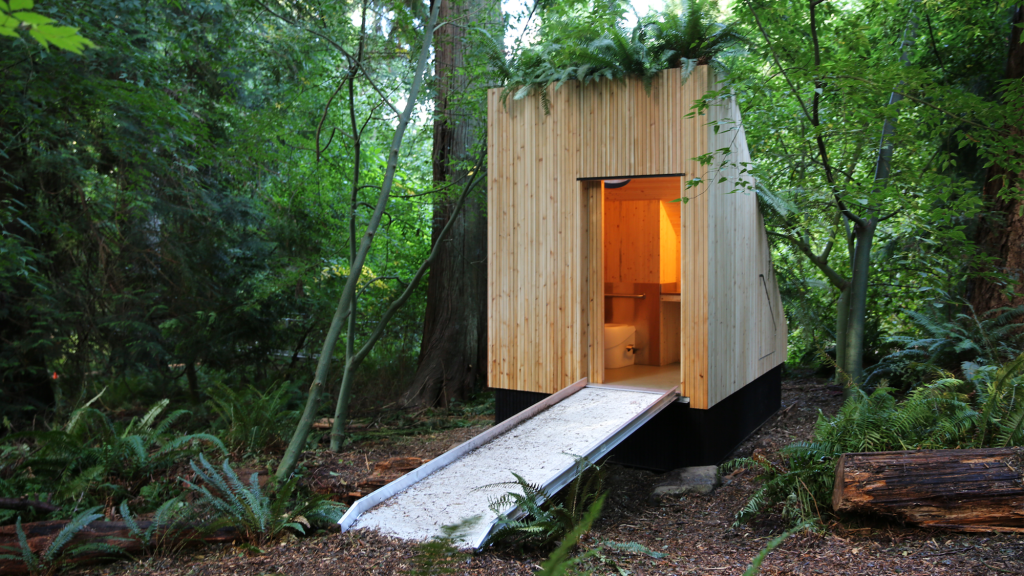How many times have you needed to use the restroom, only to discover that the only available one was a portable toilet? Suddenly, you actually don’t need to go that badly. We don’t blame you—they look bad, smell awful, and produce toxic waste.
Now, researchers from the University of British Columbia (UBC) in Canada have a solution. Meet the MycoToilet: the world’s first mushroom-powered waterless toilet. The toilet uses mycelia (fungi’s root network) to convert human waste into compost, is wheelchair-accessible, and requires just four maintenance visits a year. The team believes that the MycoToilet has great potential in parks, remote communities, and developing regions.
“We wanted to turn a daily routine everyone knows into a pleasant experience that reminds us of our connection to ecological cycles,” Joseph Dahmen, leader of the project and a researcher at UBC’s school of architecture and landscape architecture, said in a statement. “Composting toilets often carry negative associations. We aimed to create a system that’s clean, comfortable and easy to use.”
The structure consists of wooden panels equipped with a rot-resistant and antimicrobial cedar exterior, a green roof, and a low-power fan for air circulation. A system separates solid waste from liquid waste, and the solids are directed into a compartment lined with mycelium. Inside, microbes turn the solid waste into compost and the fungi absorb the bad smells.
[ Related: After the NYC marathon, where does all the poop go? ]
“Fungi are very good at breaking down biomass, including human and animal waste,” UBC microbial ecologist Steven Hallam said. “They produce enzymes that transform material into simpler compounds while supporting microbial communities that accelerate decomposition. No added water, electricity or chemicals are required.” Research indicates that mycelium liners negate over 90% of smelly compounds, according to the statement.
The MycoToilet was launched at the UBC Botanical Garden on September 26 as a six-week pilot. Researchers will monitor how the microbes improve aerobic (with oxygen) composting in the presence of mushrooms, sparing us the odors that are associated with anaerobic (without oxygen) composting.
Once it’s operating at full capacity, researchers estimate that the MycoToilet will produce around 159 gallons of soil and 528 gallons of liquid fertilizer a year. This would be a win-win, by turning waste into a solution that can reduce the use of potentially harmful chemical fertilizers.

